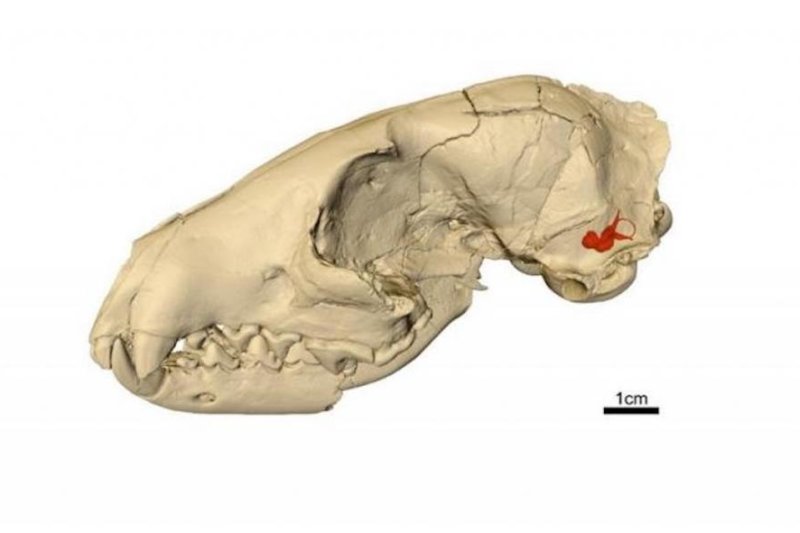Digital scans of carnivore skulls helped scientists track the link between inner ear structures and hunting strategies. The research showed the first dog species, Hesperocyon gregarius, pounced on its prey. Photo by Julia Schwab
Jan. 11 (UPI) -- To better understand how the earliest dogs hunted, scientists scanned and analyzed the skulls of lions, wolves and hyenas. The research showed the earliest known dog species, Hesperocyon gregarius, likely pounced on its prey, just like foxes and coyotes.
Scientists also determined the largest known dog species, Epicyon haydeni, were the size of grizzly bears.
Computerized scans of animal skeletons have previously helped scientists to better understand the locomotion of various species. Researchers at Scotland's University Edinburgh and the University of Vienna in Austria used previous scans to build digital models of the inner ears of 36 different carnivore species, allowing them to hone in on the specific hunting methods used by various predators.
The modeling effort showed the size and structure of species' inner ears changed as new hunting techniques were adopted. The inner ear and its three bony canals is vital to predators because it controls both balance and hearing.
"The height, width and length of all three semicircular canals show functional morphological adaptations, whereas the diameter of the canals, the height of the cochlea and particularly the angle between the lateral semicircular canal and the cochlea indicate a phylogenetic signal," scientists explained in their new paper on the subject, published Friday in the journal Scientific Reports.
As faster species emerged, their inner ears grew in size. Larger inner ears help cheetahs, lions and wolves keep their head stable while moving at high speeds.
By analyzing the makeup of the three bony canals, researchers were able to estimate whether a specific predator species -- including extant species -- relied on high-speed pursuit, pouncing, ambushing or some combination of the three.
Researchers also determined that the size and structure of the inner ear can be used to distinguish cat-like predators from dog-like predators. The inner ears of dog-like carnivores feature a distinctive angle between two parts.
"For me, the inner ear is the most interesting organ in the body, as it offers amazing insights into ancient animals and how they lived," Julia Schwab, now a PhD student at the University of Edinburgh, said in a news release. "The first dog and the largest-ever dog are such fascinating specimens to study, as nothing like them exists in the world today."















